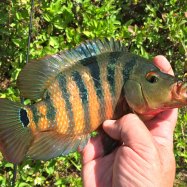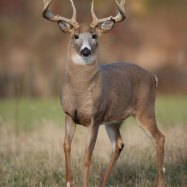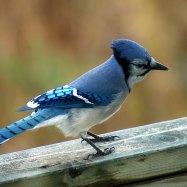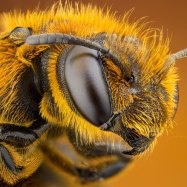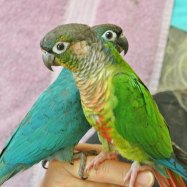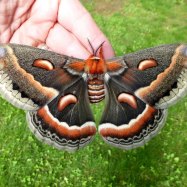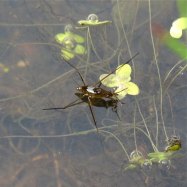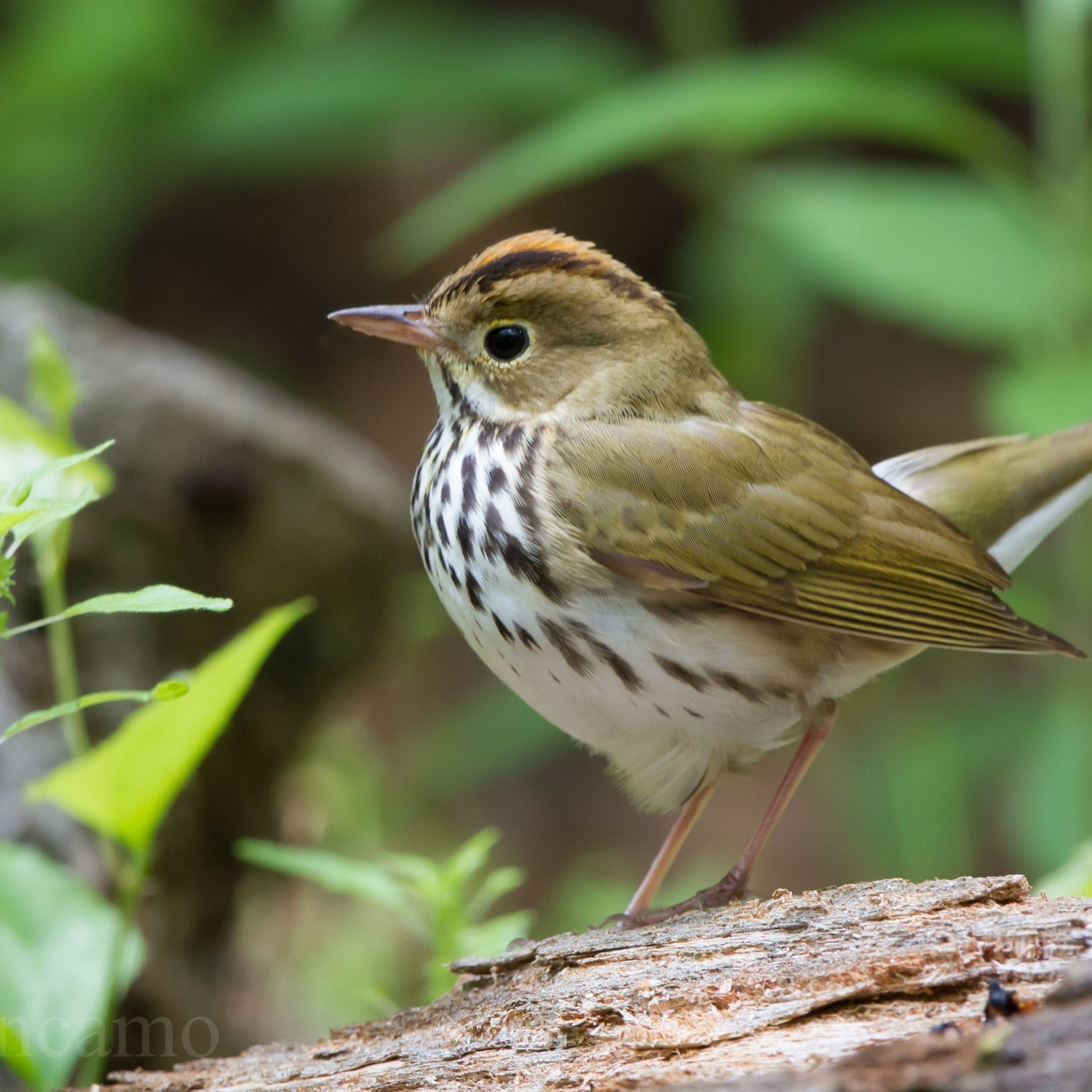
Ovenbird
5.5 to 6.3 inches (14 to 16 cm)
The Ovenbird is a small but mighty bird found in eastern and central parts of North America. With a compact and round body and a large head, it measures 5.5 to 6.3 inches in length. Belonging to the Parulidae family, this little bird is known for its distinct oven-like nest and beautiful trilling song. Keep an eye out for this feathered friend on your next hike! #Ovenbird #NorthAmerica #Birdwatching
Animal Details Summary:
Common Name: Ovenbird
Kingdom: Animalia
Habitat: Deciduous and mixed forests
The Fascinating World of the Ovenbird: A Master of Survival and Song
Nature never ceases to amaze us with its diverse array of species, each with its own unique characteristics and abilities. Among these, the ovenbird stands out as a true master of survival, with its remarkable adaptations and melodic song. Found in the deciduous and mixed forests of North, Central, and South America, this small but mighty bird thrives in diverse landscapes and leaves a lasting impression on all who encounter it.Exploring the Family of Parulidae
The ovenbird, also known by its scientific name Seiurus aurocapilla, belongs to the family Parulidae Ovenbird. This family is composed of small to medium-sized New World passerine birds, commonly known as "wood-warblers." Known for their vibrant colors, they are mostly found in the Americas, with a few species found in Eurasia and Africa. Parulidae is a diverse family, with over 100 species, and the ovenbird is just one of the many unique members.Journeying into the Life of the Ovenbird
The name "ovenbird" may conjure up images of a bird cooking in an oven, but, in reality, the name is derived from the bird's unique nesting habits. Ovenbirds build their nests on the ground, with a domed roof resembling an old-fashioned Dutch oven. This helps protect the nest from predators and harsh weather conditions, making it an efficient and secure shelter for their young.Their nests are expertly constructed using leaves, bark, grass, and other materials, and the female is the primary nest builder. These nests are also lined with soft materials such as fur, feathers, and moss, providing the perfect cozy environment for the eggs to hatch and the young to grow.
The ovenbird is known for its distinctive and loud song, which can often be heard echoing through the forest Octopus. Males use their songs to attract females and establish territories. Interestingly, they also have a second vocalization, a sharp "chip" sound, used for alarm calls. These songs and vocalizations are essential for their survival, as they allow them to communicate with other birds and warn them of potential threats.
An Insectivore Expert: The Ovenbird's Diet and Habitat
As insectivores, ovenbirds primarily feed on insects, which they search for on the forest floor. This search is not made easy due to their brown and streaked coloration, which provides excellent camouflage from predators. Their preferred prey includes ants, beetles, and caterpillars, making them essential contributors to maintaining insect populations in their habitat.The ovenbird's habitat consists of deciduous and mixed forests, providing them with a variety of food sources and suitable nesting sites. Their geographic distribution spans across North, Central, and South America, although they are more commonly found in the eastern and central parts of North America. They often migrate in the winter to warmer regions, such as the Caribbean and Central America, before returning to their breeding grounds in the spring.
Uncovering the Physical Features of the Ovenbird
At first glance, the ovenbird may appear to be a small and unassuming bird. However, upon closer inspection, one can appreciate its unique physical features and adaptations that make it a master of survival.The ovenbird has a compact and round body with a large head, giving it a somewhat "chunky" appearance. This body shape is essential for its ground-dwelling lifestyle, allowing it to maneuver through the forest floor with ease. Its wings are round and short, providing efficient flight through dense forests, while its legs are strong and sturdy to support its ground-dwelling activities.
One of its most striking physical features is its distinct coloration. The upper parts of the body are brown with black streaks, allowing it to blend in with its surroundings. The patch of orange on the crown of its head, along with its pale underparts, provide a beautiful and eye-catching contrast. These color patterns are not just for show; they serve as a form of camouflage, providing protection against predators.
Exploring the Wonder of the Ovenbird's Migration
One of the most remarkable aspects of the ovenbird's life is its annual migration. Just like many other birds, ovenbirds migrate in the fall to warmer climates in the Caribbean and Central America. However, unlike other species, ovenbirds often migrate at night, making their journeys even more mysterious and fascinating.Studies have shown that they use the stars and the Earth's magnetic fields to navigate their way, making them true master navigators. As they make this long and grueling journey, they face many challenges, including intense weather conditions, predators, and potential collisions with man-made structures such as buildings and communication towers. Despite these obstacles, the ovenbirds embark on this journey every year, demonstrating their incredible perseverance and determination.
Admiring the Ovenbird in its Natural Habitat
To observe the ovenbird in its natural habitat, one must venture into the deciduous forests of North America. These forests are home to a diverse array of flora and fauna, and the ovenbird is just one of the many fascinating species that call it home.As you walk through the forest, keep your ears open for the ovenbird's distinctive song. Listen closely, and you may hear the male calling out to you, inviting you to witness their melodic prowess. As you follow the sound, you may catch a glimpse of the bird itself, darting through the trees or foraging on the forest floor. So next time you take a walk in the woods, keep an eye out for the ovenbird, and you may be lucky enough to witness its beauty firsthand.
Conservation Efforts and Threats to the Ovenbird
With its widespread distribution, the ovenbird may seem like a widespread and abundant species. However, like many other birds, it faces various threats to its survival. The main threat facing the ovenbird is the destruction and fragmentation of its habitat due to deforestation and human activities such as logging and development. These actions not only directly harm the birds but also disrupt their migration patterns, leading to a decline in their population.Fortunately, many organizations and conservationists are working to protect the ovenbird and its habitat, raising awareness and implementing conservation measures. By preserving and restoring the forests where the ovenbird resides, we can ensure the survival of this beautiful and unique species for future generations to appreciate and enjoy.
In Conclusion
The ovenbird is a true wonder of nature. From its unique nesting habits and vocalizations to its remarkable physical features and impressive migration, this bird captivates us with its abilities. Its resilience in the face of numerous threats is a testament to its adaptability and survival instincts. With the ovenbird's population declining, it is crucial now more than ever to appreciate and protect this remarkable bird and its diverse habitat. So let us all take a moment to marvel at the beauty and resilience of the ovenbird, a true master of survival and song.

Ovenbird
Animal Details Ovenbird - Scientific Name: Seiurus aurocapilla
- Category: Animals O
- Scientific Name: Seiurus aurocapilla
- Common Name: Ovenbird
- Kingdom: Animalia
- Phylum: Chordata
- Class: Aves
- Order: Passeriformes
- Family: Parulidae
- Habitat: Deciduous and mixed forests
- Feeding Method: Insectivorous
- Geographical Distribution: North, Central, and South America
- Country of Origin: United States and Canada
- Location: Eastern and central parts of North America
- Animal Coloration: Brown with streaks on the upper parts and pale underneath
- Body Shape: Compact and round body with a large head
- Length: 5.5 to 6.3 inches (14 to 16 cm)
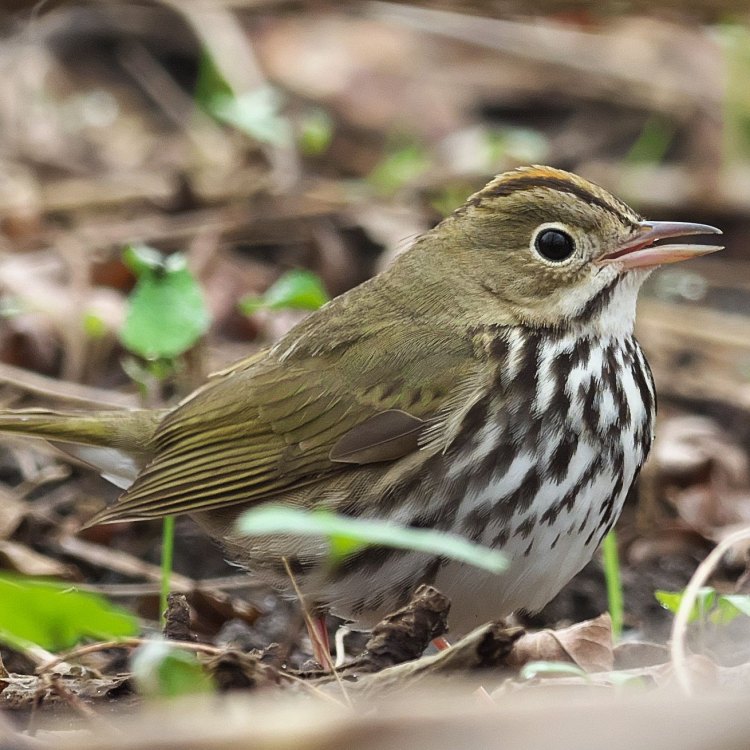
Ovenbird
- Adult Size: Small
- Average Lifespan: 8 years
- Reproduction: Monogamous
- Reproductive Behavior: Builds a ground nest with a domed roof
- Sound or Call: Loud, ringing song that sounds like 'teacher, teacher, teacher'
- Migration Pattern: Long-distance migrant
- Social Groups: Solitary
- Behavior: Ground-foraging
- Threats: Habitat loss and fragmentation
- Conservation Status: Least Concern
- Impact on Ecosystem: Control of insect populations
- Human Use: Birdwatching
- Distinctive Features: White eye-ring and orange crown
- Interesting Facts: Named 'Ovenbird' due to its nest's resemblance to a clay oven
- Predator: Snakes, birds of prey, and mammals
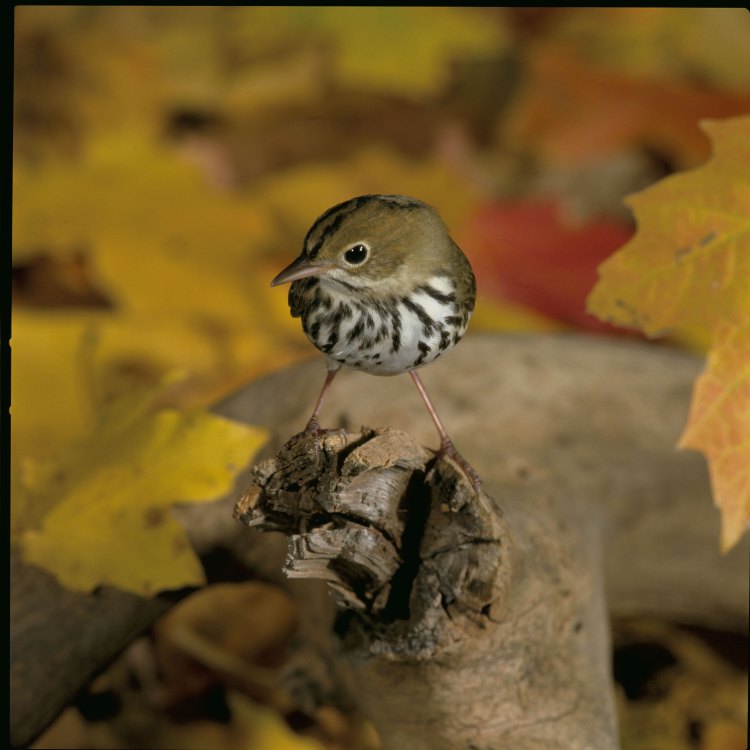
Seiurus aurocapilla
Ovenbird: The Small, Yet Mighty, Ground-foraging Songbird
Nature is filled with an amazing array of creatures, each with their own unique features and habits. One such intriguing species is the Ovenbird, a small yet mighty songbird known for its loud, ringing call and its distinctive behavior of building ground nests with domed roofs. In this article, we will delve deeper into the world of this fascinating bird, learning about its physical characteristics, behavior, threats, conservation status, and impact on the ecosystem.Physical Characteristics
The Ovenbird, scientifically known as Seiurus aurocapilla, is a small songbird that belongs to the Parulidae family of warblers PeaceOfAnimals.Com. It is about 5.7-6.3 inches (14.5-16 cm) in length, making it one of the smaller bird species. It has a wingspan of 7.9-9.4 inches (20-24 cm) and typically weighs around 0.5-0.7 ounces (14-20 grams) Osprey.
The bird has a brownish-olive plumage on its upper body, with dark streaks and a reddish-brown tail. Its underparts are speckled with white, and it has a distinctive white eye-ring with an orange crown, making it easily distinguishable from other similar-looking warblers.
Lifespan and Reproduction
The Ovenbird has an average lifespan of 8 years in the wild, although some individuals have been known to live up to 11 years. They reach sexual maturity at around 2 years of age and are monogamous, forming long-term pair bonds during breeding season.
Reproduction in Ovenbirds usually starts in late April and continues till late June. The female builds a ground nest with a domed roof, often hidden in dense vegetation or on the forest floor. This behavior gives the bird its name, as the nest resembles a traditional clay oven. The female typically lays 4-5 eggs, and both parents take turns incubating them for around 12-14 days. Once the eggs hatch, both parents continue to care for the young, providing them with food and protection until they are ready to leave the nest after 12-14 days.
Behavior and Migration
Unlike most warblers, the Ovenbird is not a tree-dwelling bird. Instead, it forages on the ground, using its strong legs and bill to dig through leaf litter and find insects, spiders, and other small invertebrates. This behavior is also reflected in its distinctive ground nest, which provides ample protection from predators.
During the breeding season, the Ovenbird is known for its loud, ringing song that sounds like 'teacher, teacher, teacher,' earning it the nickname of "teacher bird." This song can be heard from a distance of up to 100 yards (91 meters).
In the winter months, Ovenbirds migrate to Central and South America, making a journey of up to 2,500 miles (4,000 kilometers). They are considered long-distance migrants, often flying non-stop over the Gulf of Mexico to reach their wintering grounds.
Social Groups and Threats
Ovenbirds are solitary birds, usually seen foraging and nesting alone. However, during migration, they may join mixed flocks with other migratory songbirds.
One of the biggest threats to Ovenbirds is habitat loss and fragmentation. As they require dense undergrowth and leaf litter to build their ground nests, any disturbance or destruction of their habitat can directly impact their breeding success. Pesticide use, urbanization, and deforestation all play a role in the decline of Ovenbird populations.
Conservation Status and Impact on Ecosystem
Despite these threats, the Ovenbird is currently categorized as "Least Concern" on the IUCN Red List of Threatened Species. This is due to its large population and a widespread distribution across North and Central America.
However, it is still important to recognize and protect this species, as they play an essential role in the ecosystem. Ovenbirds are considered insectivores, meaning they primarily feed on insects. By controlling insect populations, they play a crucial role in maintaining the balance of the ecosystem. Their ground-foraging behavior also helps aerate the soil, promoting healthy plant growth.
Human Use and Distinctive Features
While Ovenbirds may not have any direct economic value, they are highly sought after by birdwatchers and nature enthusiasts for their unique behaviors and beautiful songs. The loud, ringing song of the Ovenbird can often be heard throughout the breeding season, making it a popular bird to observe and listen to.
Apart from their distinctive white eye-ring and orange crown, Ovenbirds also have a distinct pattern of white stripes on their crown, giving them a "capped" appearance. This feature, combined with their ground-foraging behavior and domed ground nest, makes them a fascinating subject for avid birdwatchers.
Interesting Facts
In addition to its fascinating behavior and distinct features, the Ovenbird has some other interesting facts associated with it. As mentioned earlier, the bird gets its name from the unique shape of its ground nest, resembling a traditional clay oven. This fact was noted by early settlers in North America, who gave the bird its common name.
Another fun fact about Ovenbirds is that they have a "wing-flashing" behavior, where they raise and lower one wing at a time while foraging. It is believed that this behavior may help them startle insects, making it easier for them to catch their prey.
Predators
Like all animals, Ovenbirds also have natural predators that pose a threat to their survival. Snakes, including rodents, racer snakes, and black rat snakes, often prey on the eggs and young birds. Birds of prey, such as hawks and owls, are also a significant threat to adult Ovenbirds. In addition, mammals like cats, squirrels, and foxes may also prey on these birds.
Conclusion
The Ovenbird may be a small songbird, but it has certainly captured the attention of many with its unique features and behaviors. From its distinctive ground nest to its loud, ringing call, this bird stands out in the world of warblers. However, like many other species, Ovenbirds are facing threats from habitat loss and fragmentation. As humans, it is essential to recognize the impact of our actions on the environment and work towards preserving and protecting these incredible creatures. So the next time you hear the loud 'teacher, teacher, teacher' call of an Ovenbird, take a moment to appreciate its beauty and significance in nature.
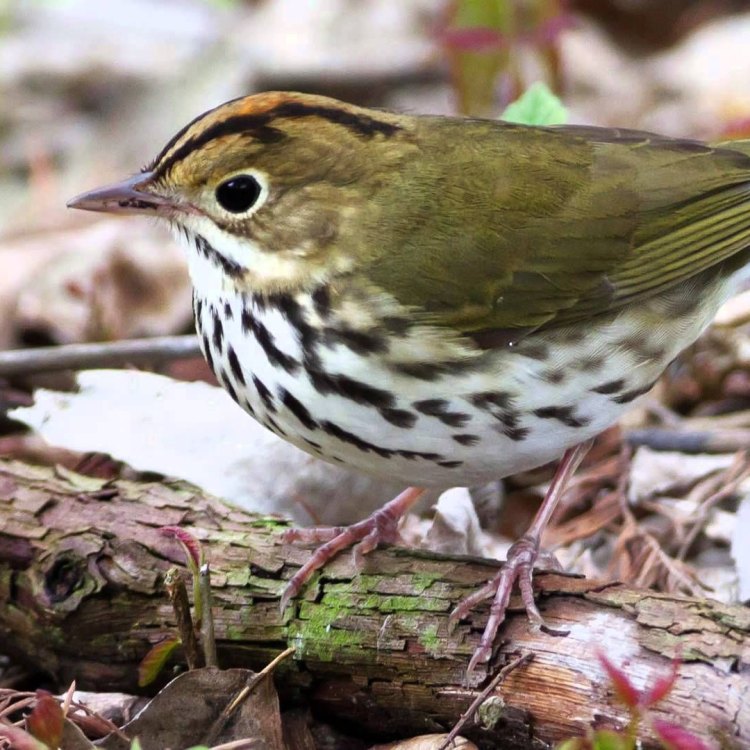
The Fascinating World of the Ovenbird: A Master of Survival and Song
Disclaimer: The content provided is for informational purposes only. We cannot guarantee the accuracy of the information on this page 100%. All information provided here may change without prior notice.

